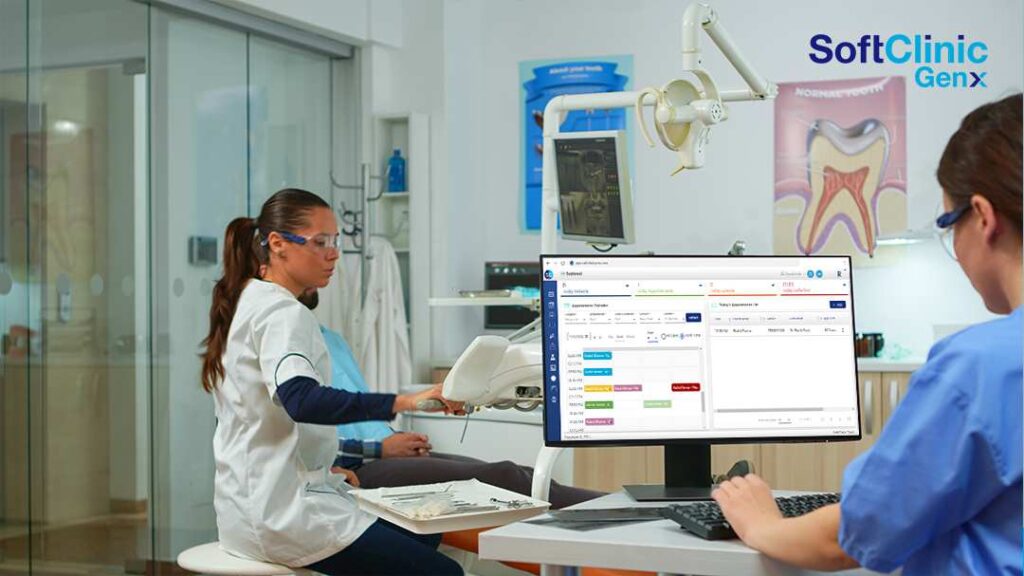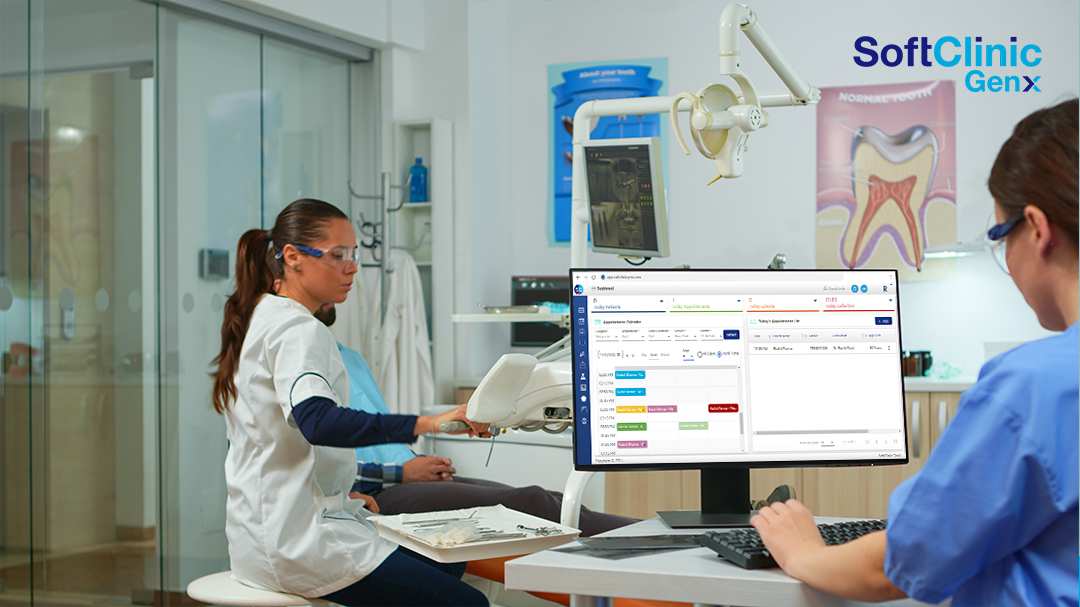How Hospital Billing Software Enhances Patient Experience from Admission to Discharge
February 6, 2025Table of Contents
Introduction
Providing exceptional patient care extends beyond clinical excellence—it also requires seamless administrative processes. From admission to discharge, every interaction contributes to the patient experience. Hospital billing software plays a critical role in streamlining workflows, reducing errors, and simplifying billing and insurance claims. By digitizing financial operations, hospitals improve efficiency, transparency, and patient satisfaction.
With 85% of hospitals investing in digital solutions to enhance financial processes, hospital billing software is a must-have for modern healthcare facilities. (HIMSS). Let’s explore how this technology transforms the patient experience.
Why Hospitals Need Billing Software for Patient-Centric Care
Managing hospital admissions, treatments, and discharges involves multiple financial transactions. Traditional, paper-based billing systems often lead to inefficiencies and financial discrepancies. Hospital billing software eliminates these bottlenecks by:
1. Error-Free Billing
- Automated calculations reduce human errors, ensuring accurate invoices.
- Transparent billing breakdowns improve patient trust.
2. Streamlined Insurance Claims
- Pre-verification ensures claims align with insurance policies.
- Reduces claim rejection rates, enabling faster approvals.
3. Efficient IPD (In-Patient Department) Management
- Tracks patient expenses in real-time from admission to discharge.
- Prevents last-minute billing surprises for patients and families.
These benefits make billing software a vital tool for improving patient experiences and hospital efficiency.
Key Features of Hospital Billing Software That Enhance Patient Experience
1. Comprehensive Patient Admission Process
A seamless admission experience reduces patient stress. Hospital billing software streamlines:
- Digital Patient Registration: Patients can submit demographic and insurance details online or at kiosks, reducing manual paperwork.
- Real-Time Bed Allocation: Integrates with hospital bed management systems to prevent delays.
Hospitals with automated patient registration systems report 30% faster admission times, improving workflow efficiency. (HealthIT.gov).
2. Customizable Tariff Plans and Rates
Every hospital serves patients with diverse financial backgrounds. Billing software offers:
- Flexible Tariff Plans: Adjusts pricing based on insurance terms and treatment types.
- Multi-Tier Rate Structures: Separates insured costs from out-of-pocket expenses, preventing confusion.
These features boost financial transparency, helping patients plan their expenses without unexpected costs.
3. Streamlined IPD Management
For hospitalized patients, real-time billing ensures financial transparency throughout their stay.
- Automated Expense Tracking: Logs room charges, tests, medications, and surgeries in real-time.
- Dynamic Bill Updates: Automatically updates invoices when new treatments are added.
- Pre-Discharge Summaries: Generates a comprehensive bill before discharge to prevent delays.
By eliminating manual calculations, hospitals reduce discharge waiting times, enhancing patient satisfaction.
Simplifying Insurance Claims and Approvals
One of the most complex aspects of billing is insurance claims processing. Manual systems often lead to denials and claim rejections, causing financial strain for both hospitals and patients.
1. Detailed Bill Generation
- Generates compliant, itemized bills that meet insurance provider standards.
- Reduces billing disputes and improves hospital revenue cycles.
2. Pre-Authorization Management
- Tracks insurance approvals before treatment, reducing out-of-pocket expenses for patients.
- Reduces claim rejection rates by 50% through automated verification (American Medical Association).
3. Digital Claims Submission
- Directly integrates with insurance company portals, reducing claim processing time by 40%.
- Automated tracking helps patients stay informed about claim status.
By automating claims, hospitals improve cash flow and reduce financial stress for patients.
Efficient Discharge and Final Billing
Discharge delays frustrate patients and lower hospital satisfaction ratings. A well-integrated billing system accelerates final payments.
1. Consolidated Billing
- Combines charges from multiple hospital departments into a single, accurate invoice.
- Helps patients understand cost breakdowns for better financial planning.
2. Integrated Payment Gateways
- Supports multiple payment modes (credit/debit cards, net banking, UPI, mobile wallets).
- Encourages cashless transactions, reducing delays.
3. Post-Discharge Communication
- Sends digital invoices via SMS/email, enabling patients to access billing information remotely.
- Improves post-hospitalization financial transparency.
With 80% of patients preferring digital payment options, (Forbes), hospitals must offer seamless digital transactions.
Benefits for Hospital Administration
Beyond patient convenience, billing software streamlines hospital finances.
1. Operational Efficiency
- Reduces manual workload by 50%, allowing staff to focus on patient care.
2. Accurate Financial Reporting
- Generates real-time revenue analytics for better budget planning.
3. Regulatory Compliance
- Ensures billing aligns with global healthcare standards, such as HIPAA and NDHM.
Automated financial tracking prevents revenue leakage, optimizing hospital profitability.
Real-World Impact: Case Study
Multi-Specialty Hospital in India
Before implementing billing software, a leading multi-specialty hospital faced:
✔️ Frequent billing errors
✔️ Delayed insurance claim approvals
✔️ Extended discharge waiting times
Post-implementation results:
✅ 25% Reduction in Discharge Delays – Automated final billing improved turnaround times.
✅ 30% Faster Insurance Processing – Compliant invoices reduced claim rejections.
✅ Higher Patient Satisfaction – Transparent billing boosted patient trust.
The adoption of automated billing solutions helped the hospital optimize operations and enhance patient-centric care.
Future Trends in Hospital Billing Software
As technology evolves, billing systems are integrating AI and blockchain solutions for greater efficiency.
1. AI-Powered Billing Insights
- AI-based analytics predict patient payment behaviors and optimize revenue collection.
2. Blockchain for Secure Transactions
- Enhances financial transparency and prevents fraudulent billing.
3. Patient Portals for Self-Service Billing
- Allows patients to:
✅ View bills in real-time
✅ Track insurance claims
✅ Make online payments
By 2027, 75% of hospitals are expected to integrate AI into billing systems. (McKinsey).
FAQs on Hospital Billing Software and Patient Experience
How does hospital billing software improve the patient experience?
Billing software enhances patient experience by automating billing processes, reducing errors, and ensuring faster insurance claims processing. It provides transparent invoices, minimizes wait times, and offers multiple payment options, making payments smoother and more efficient.
Can billing software help with insurance claim processing?
Yes, modern hospital billing software integrates pre-authorization checks, generates compliant itemized bills, and automates digital claims submission. This reduces insurance claim rejections and delays, improving hospital cash flow and patient satisfaction.
Is hospital billing software suitable for all types of hospitals?
Yes, billing software can be customized for multi-specialty hospitals, specialty clinics, diagnostic centers, and small healthcare facilities. It can be scaled according to hospital size and operational needs.
How does billing software prevent revenue leakage in hospitals?
By automating billing processes, tracking real-time expenses, and generating detailed financial reports, billing software prevents revenue loss due to errors, fraud, or miscalculations. It also ensures compliance with healthcare financial regulations.
What are the latest trends in hospital billing software?
Emerging trends in billing software include:
AI-Powered Predictive Analytics for revenue forecasting.
Blockchain-Based Billing for fraud prevention and transparency.
Patient Self-Service Portals for real-time bill tracking and online payments.
Cloud-Based Billing Systems for remote access and multi-location hospitals.
Conclusion
Hospital billing software is essential for modernizing patient experiences from admission to discharge. By automating financial workflows, hospitals:
✔️ Reduce administrative burden
✔️ Improve billing accuracy
✔️ Enhance patient satisfaction
For healthcare providers aiming to optimize hospital operations, solutions like SoftClinic GenX offer a seamless, patient-friendly approach.
Want to revolutionize your hospital billing?
Explore SoftClinic GenX today!

